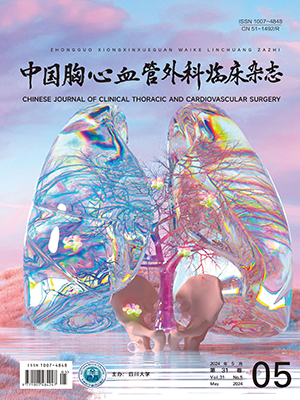| 1. |
Xu B, Mottram PM, Lockwood S, et al. Imaging guidance for transcatheter aortic valve replacement: Is transoesophageal echocardiography the gold standard? Heart Lung Circ, 2017, 26(10): 1036-1050.
|
| 2. |
Hayek SS, Corrigan FE, Condado JF, et al. Paravalvular regurgitation after transcatheter aortic valve replacement: Comparing transthoracic versus transesophageal echocardiographic guidance. J Am Soc Echocardiogr, 2017, 30(6): 533-540.
|
| 3. |
Smith CR, Leon MB, Mack MJ, et al. Transcatheter versus surgical aortic-valve replacement in high-risk patients. N Engl J Med, 2011, 364(23): 2187-2198.
|
| 4. |
Reardon MJ, Adams DH, Coselli JS, et al. Self-expanding transcatheter aortic valve replacement using alternative access sites in symptomatic patients with severe aortic stenosis deemed extreme risk of surgery. J Thorac Cardiovasc Surg, 2014, 148(6): 2869-2876.
|
| 5. |
Sinning JM, Ghanem A, Steinhäuser H, et al. Renal function as predictor of mortality in patients after percutaneous transcatheter aortic valve implantation. JACC Cardiovasc Interv, 2010, 3(11): 1141-1149.
|
| 6. |
Rodés-Cabau J, Webb JG, Cheung A, et al. Transcatheter aortic valve implantation for the treatment of severe symptomatic aortic stenosis in patients at very high or prohibitive surgical risk: Acute and late out- comes of the multicenter Canadian experience. J Am Coll Cardiol, 2010, 55: 1080-1090.
|
| 7. |
Wessely M, Rau S, Lange P, et al. Chronic kidney disease is not associated with a higher risk for mortality or acute kidney injury in transcatheter aortic valve implantation. Nephrol Dial Transplant, 2012, 27(9): 3502-3508.
|
| 8. |
Conrotto F, Salizzoni S, Andreis A, et al. Transcatheter aortic valve implantation in patients with advanced chronic kidney disease. Am J Cardiol, 2017, 119(9): 1438-1442.
|
| 9. |
Castriota F, Nerla R, Micari A, et al. Contrast-zero transcatheter aortic valve replacement for patients with severe renal dysfunction: A single-center experience. JACC Cardiovasc Interv, 2018, 11(8): 820-822.
|
| 10. |
Arrigo M, Maisano F, Haueis S, et al. Transcatheter aortic-valve implantation with one single minimal contrast media injection. Catheter Cardiovasc Interv, 2015, 85(7): 1248-1253.
|
| 11. |
Eskandari M, Aldalati O, Byrne J, et al. Zero contrast transfemoral transcatheter aortic valve replacement using fluoroscopy-echocardiography fusion imaging. Am J Cardiol, 2016, 117(11): 1861-1862.
|
| 12. |
Pendyala LK, Minha S, Barbash IM, et al. Commercial versus PARTNER study experience with the transfemoral Edwards SAPIEN valve for inoperable patients with severe aortic stenosis. Am J Cardiol, 2014, 113(2): 342-347.
|
| 13. |
Aljohani S, Alqahtani F, Almustafa A, et al. Trends and outcomes of aortic valve replacement in patients with end-stage renal disease on hemodialysis. Am J Cardiol, 2017, 120(9): 1626-1632.
|
| 14. |
李卓仁, 蔡妙贞, 赵文强, 等. 经食道多普勒超声心动图估测冠状动脉血流储备. 中华内科杂志, 1994, 33(9): 628-629.
|
| 15. |
Hakim D, Ghimire G, Alli OO, et al. Large-field intravascular ultrasound for annular sizing and predicting paravalvular regurgitation during TAVR: Comparisons with multidetector computed tomography and transoesophageal echocardiography. Eur Heart J Cardiovasc Imaging, 2017, 18(12): 1404-1413.
|




